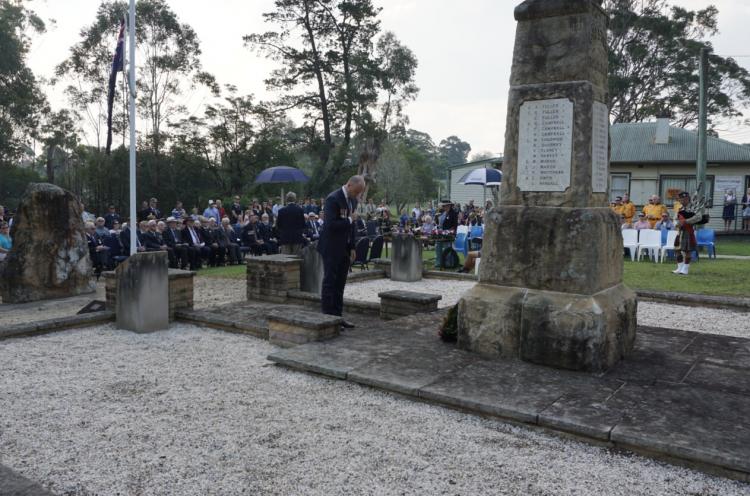
IN the NSW Parliament, there is a large, ornate memorial on the wall above the opposition benches.
It honours two men: George Braund and Ted Larkin. Braund and Larkin were parliamentarians.
Larkin was the Labor son of a coal miner and “was seldom without a socialist book or pamphlet in his pocket”. Braund, a Liberal from the bush, was the son of a merchant and gave as good as he got on taxes and trade.
They both represented NSW in rugby union — but Larkin defected to help start a fledging code called rugby league, and that in itself is another story.
They were two very different men. But, in August 1914, they enlisted to serve. No one expected them to. After all, Braund was 51 and both were married with families.
But they chose to leave. As Larkin explained to his constituents, “it is the duty of public men to set an example in this time of national need”.
One hundred and three years ago, they splashed ashore at Gallipoli.
From Larkin’s first moment ashore, his battalion was under intense fire. He headed towards the hills, but was struck by machinegun fire.
Stretcher-bearers were called, but Larkin waved them off saying “there’s plenty worse than me out there”. Ted Larkin was one of 750 Australians who died on that first day.
The same day, Lieutenant Colonel George Braund led two companies of the 3rd Brigade. After landing, he led his men up steep goat tracks to a vital juncture of a ridge.
One soldier wrote that Braund “stood with a rifle in his hands for two and a half days when they landed” as he defended his position.
After three days, unable to hold off any longer, Braund led his men back to the beach.
Because of that tenacity, Braunds Hill was named after him. But the fickleness of war spares no man, and a week later, Lieutenant Colonel Braund was struck down by friendly fire.
The Sun newspaper wrote of the loss of Braund and Larkin that “they were elected and stood on the threshold of public careers, the limits or ends of which it was impossible to foresee. There was no place, in the public life of Australia that was not open to either of them.”
But isn’t that the story of all who we remember today? We cannot fathom the countless stories of men and women who had lives of unquestioned potential. They were just two.
On Anzac Day we remember the 102,000 men and women who have given their lives for their country.
We remember the multiple more who returned with physical injuries, and injuries to their heart and soul. And we honour those who have worn the uniform and wear it today. We remember them all.
For they have come from every part of our land. They are airman and nurses, soldiers and sailors; volunteers and conscripts; white, immigrant and indigenous; religious and irreligious; married and single, young and old; gay and straight; wealthy and itinerant; and, yes, Liberal and Labor.
But on Anzac Day none of those labels matter, particularly our political ones. Instead, we remember one thing — they were Australians first and last.
To use the words of Paul Keating: they “are all of us”, and they are the best of us as well. Lest we forget.
Matt Kean is NSW Minister for Innovation and Better Regulation
This article by Matt Kean MP appeared in the Daily Telegraph.
